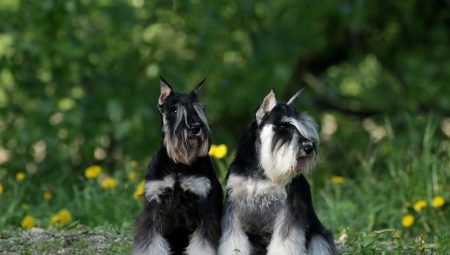Miniature Schnauzers are unique dogs. They very harmoniously combine compact sizes and excellent working qualities, which allow, without exaggeration, to consider the zwergs as a true service breed. Unprecedented courage, discretion and firm self-confidence make this little pet a full-fledged guard and guard.
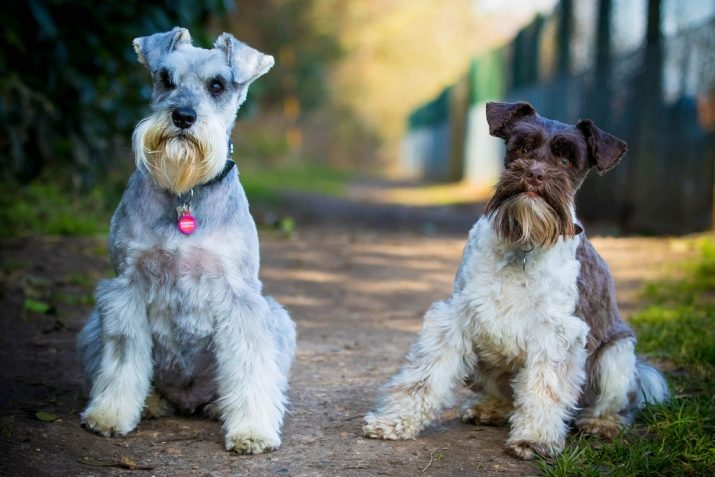
Origin history
The first mention of the miniature schnauzer breed dates back to the beginning of the 19th century. Dogs were quite common in Germany, where they were used to protect the crop from rats, mice and other rodents. It is known for certain that the ancestors of the zwergs are not too large mittenschnauzers, who were knitted with pinschers, affinpinschers, poodles and spitz.
The main goal of the breeders was to create miniature dogs with the temperament of schnauzers, suitable for living in small apartments and capable of becoming excellent companions. As a result of selection, a new breed was born, which immediately attracted the attention of European dog breeders.
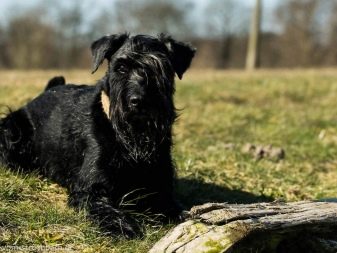
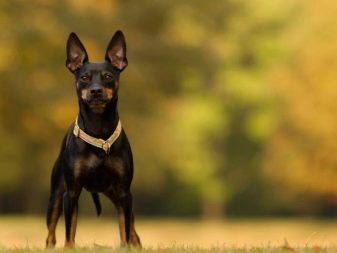
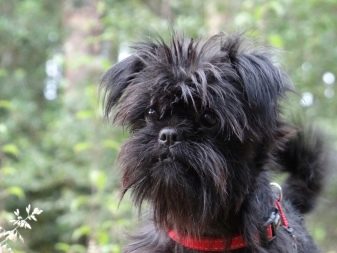
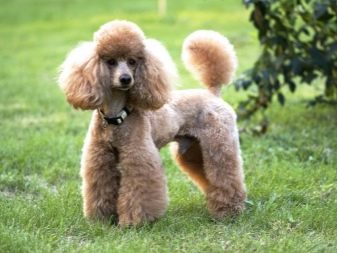
By the end of the century, namely in 1890, the miniature schnauzers made their debut at the dog show, and in the same year the breed received its first standard.
After 5 years, the first pedigree club was formed in Cologne, Germany, where besides pinschers, schnauzers also entered. Josef Bert, the same German breeder who initiated and inspired the creation of a new breed, was elected its chairman.The first officially registered representative of the zerg was the male Jocchio Full Liliput, born in 1898.
In 1902, the club published the first Tribal Book, in which, along with traditional pinschers and schnauzers, there were already 14 tsvergs.
The new breed developed at a natural pace and was in high demand not only in the homeland, but throughout Western Europe. By 1930, the miniature schnauzers were already well-known not only in the Old World, but also in Canada and the United States.
The first zergs were brought to the Soviet Union from America in 1974, however, they did not give an active impetus to the development of the breed and were kept as pets. A little later, in 1978, a whole “party” of Zwergschnauzers was presented to the Soviet border guards by their Czechoslovak colleagues, whose breed was in the service of border protection.

The donated animals were housed in the Lviv nursery, from where they first got to Moscow and then to Leningrad dog handlers. This contributed to the opening in Moscow of the first breeding nursery, which began its work in 1980. Today the miniature schnauzers occupy the seventh line of the breed popularity rating.performing the role of not only a pet, but also a service dog. Animals work at airports and customs, where they help to search for drugs, weapons and explosives.
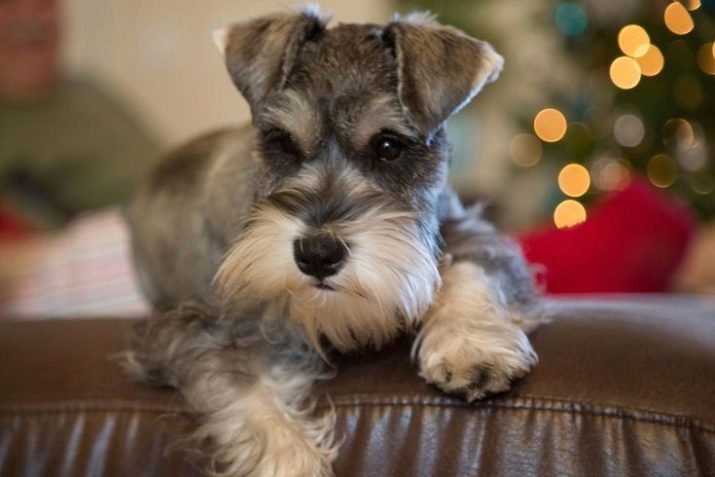
Breed description
The Miniature Schnauzer is a compact, muscular dog with very stiff coat and expressive face. Frowning eyebrows and a neat beard give the pet a severe look, which, combined with its miniature size, causes an invariable smile.

The description of the breed is as follows.
- Housing the miniature schnauzer has a high front part, due to which the line of the back from the withers to the tail is noticeably tilted. Such a posture is clearly visible even in monthly puppies and, along with its muzzle, is the breed's trademark. Due to the tilted position of the body, the dog can develop greater speed. The zweders loin is rather short, giving the body a compact size and square shape. The chest is powerful, when passing into the stomach forms an arcuate line.
- Neck muscular, has an average length and smoothly bends into the withers.
- The head is proportional to the body and narrowed from ear to nose. The skull is quite strong, without an occipital protuberance. The transition from a flat and smooth forehead to the nose is emphasized by expressive eyebrows. The muzzle has a somewhat blunt structure and is trimmed with a short mustache and beard. The nose is always black, the nostrils are wide, clearly visible.
- Lips like the nose, they have black pigmentation and fit snugly against the teeth. The teeth are white and strong, closing in a scissor bite. Jaws are powerful, cheekbones are moderately developed.
- The ears They have a V-shaped structure, high landing and ends slightly bent towards the temples.
- Eyes small and oval, always dark in color.
- Front legs strong, with well-developed muscles and not elbows protruding neither in nor out. The hind limbs from a side angle are set obliquely, which gives the posture a swift look. The hocks are strong, well developed, the legs are round with short black claws.
- Tail has a high landing and looks up. According to the latest rules, they will not stop it, but owners of dogs that do not take part in exhibitions continue to do this for greater convenience.
- Wool Differs in high rigidity and density, reminds a wire to the touch. The undercoat is also very thick, quite tightly attached to the body.
As for the color, the old standard, valid until 1976, provided for only two options: black and "pepper and salt." However, since 1977, Germany has initiated the recognition of another color - black with silver, which later became the most popular. Further, in 1992, white was approved, and in 2006 - a chocolate and tan color.True, the latter was recognized only unilaterally by the Russian Cynological Federation, while the federations of other countries have not yet done so.

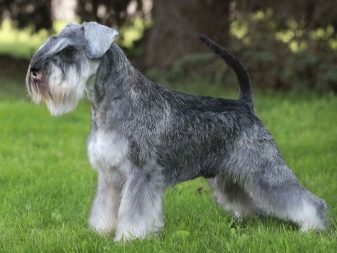
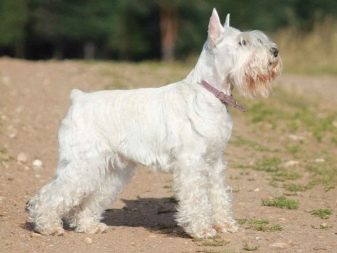
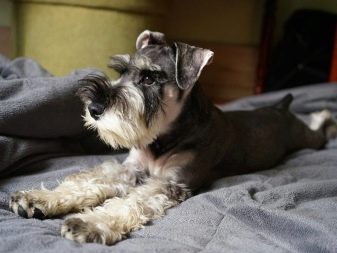
However, the characterization of the miniature schnauzers would be incomplete without considering the flaws and defects. Thus, a round and massive skull, the presence of skin folds on the body, a pointed or too elongated muzzle and a long curved back can lead to a decrease in marks at the exhibition. Disqualification threatens the animal for abnormalities in behavior, such as excessive cowardice or excessive aggressiveness, as well as for malocclusion, deviations from the norm of growth in one direction or another and unacceptable color.
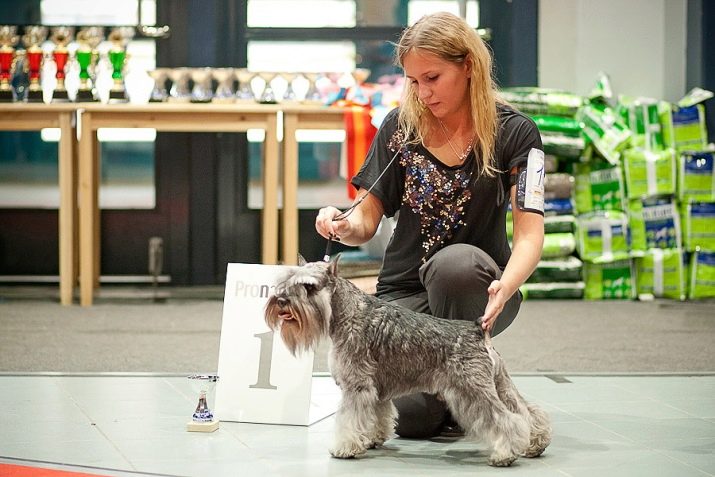
Character
The Miniature Schnauzer is the smallest breed of service dogs that, if necessary, can stand up for its owner and for his property. However, the distinguishing feature of the zerg is the lack of propensity to make independent decisions, as is the case with many guard and guard dogs. The pet will not rush to the attacker without the owner’s command and will not be aggressive towards uninvited guests.
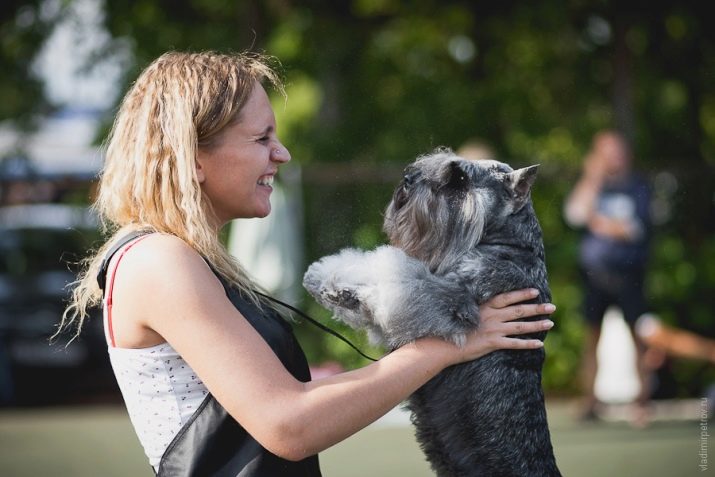
Like any other service dog, the miniature needs a master with a strong character, in which he can see his leader.
Despite their small size, the miniature schnauzers are brave dogs devotedly devoted to their master. Their gaze from stern eyebrows is always full of determination and straightforwardness. However, at home, the Zwerg did not mind to flock to the household, play with small children. Behind the harsh appearance of this desperate mini-guard is a gentle and deeply loving family.

Tsvergs get along well with other dogs living with them under one roof, and are indifferent to cats. Due to their high mobility, they are ideal for people with an active lifestyle. The dog will be a great companion for a morning run, will be happy to keep company on a bike ride and will happily go camping.
Dogs are well suited for families with children: they are able to tirelessly play with the child and endure his obsessive fun for hours. However, a dwarf schnauzer is not suitable for a too busy person: the animal really needs love and communication with the owner, it does not tolerate the lack of attention and care.
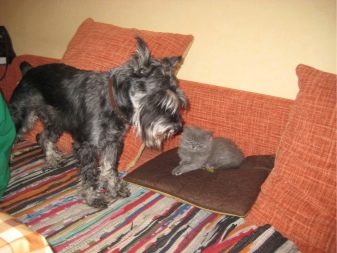
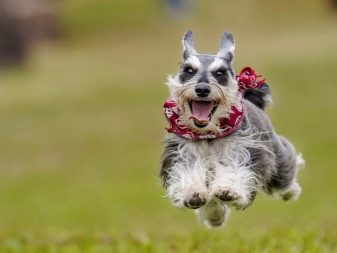
Miniature Schnauzers are small dogs with a serious disposition and excellent physical characteristics. They have a stable nervous system, a lightning reaction, resourcefulness, sometimes turning into cunning, distrust of strangers and high vigilance. The security and guard qualities of the tsvergas are manifested from an early puppy's age, which makes the dog very funny and brave at the same time.
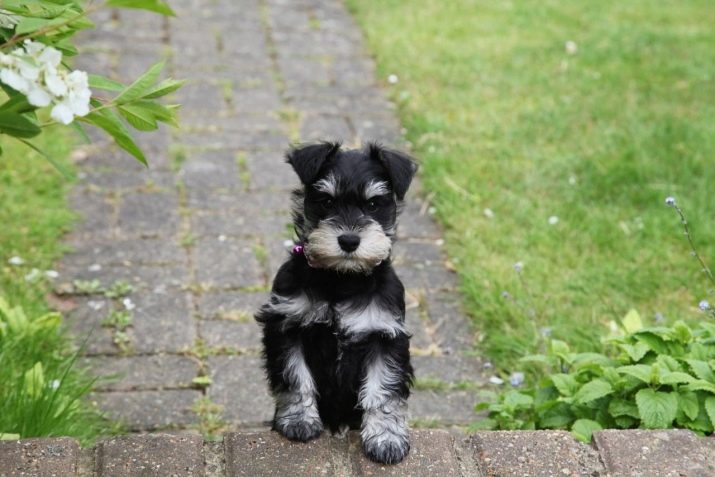
Pros and Cons of Dogs
Great popularity of miniature schnauzers and high demand for puppies due to a number of undeniable advantages of these dedicated and intelligent dogs.
- Zergs are considered excellent companionsThey are able to brighten up the everyday life of a lonely person. Once in a large family, the dog will also feel excellent, adoring each of the household and without hesitation standing up to their defense.
- Thanks to the compact physique of the miniature schnauzers conveniently maintained in a city apartment. Moreover, the size of the animal allows you to take it with you on long trips and on vacation.
- Zergs are full service dogs, therefore, they are easy to learn and carry out commands well.
- Dogs are very active and love to move, which is especially valuable for lovers of cycling and jogging.
- Despite the serious appearance, dogs have a sense of humor, and in difficult moments of the owner’s life they can empathize.
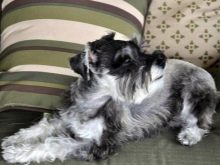

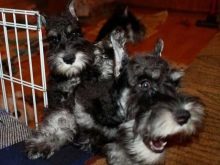
The disadvantages of the breed include primarily difficulties in grooming. Zvergs need regular groomer services, for which you will have to give a round sum each time. In addition, dogs that have not undergone training can be stubborn and aggressive towards other animals.
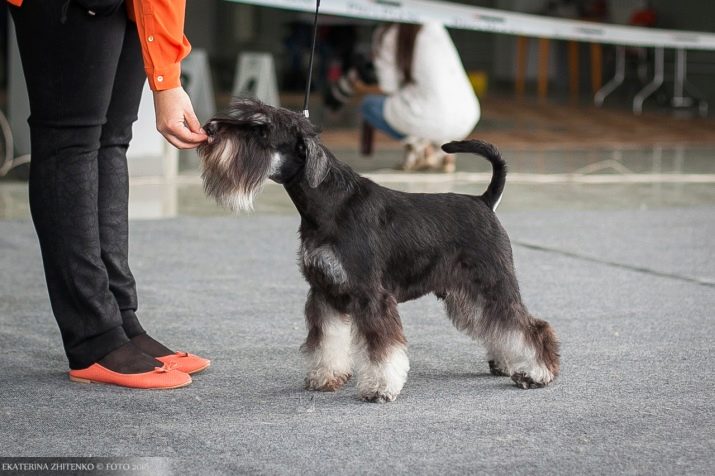
Life span
Miniature schnauzers are distinguished by excellent health and live an average of 12-14 years, and with unburdened heredity and competent care, they often live to 16. The most common ailments that affect zwerg are eye diseases such as cataracts and glaucoma. However, it is worth noting that diseases are mainly affected by individuals of age, while young people have strong immunity and are very rarely ill.
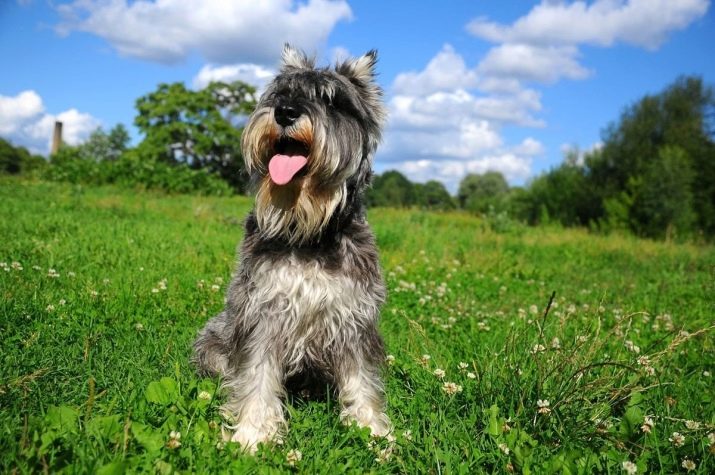
Zvergs occasionally experience allergic reactions, mostly associated with an improperly selected diet and feeding the dog from the table.
And also among pathologies inflammatory skin diseases and its tendency to neoplasms can be noted. Skin diseases entail complete loss of hair in the affected areas with the appearance of bald patches and blackheads. The exacerbation of such diseases is often triggered by trimming, so the procedure should be followed with strict observance of sanitary standards, trusting the animal only to an experienced specialist.
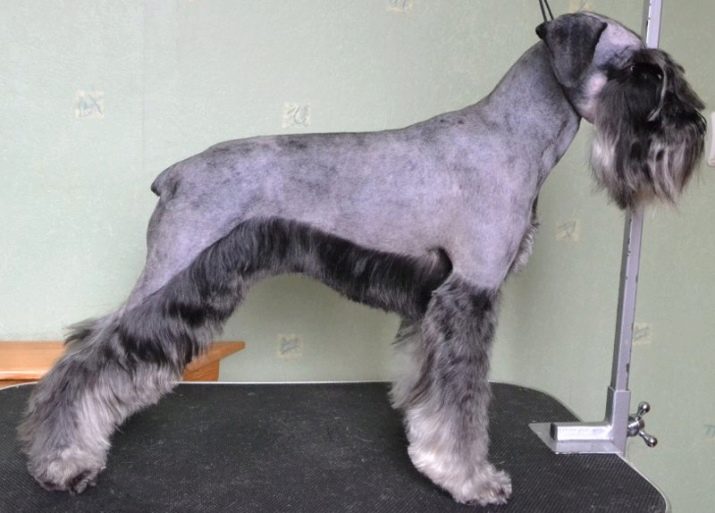
In addition, injuries can be attributed to the most common health problems since, because of their “reactivity," the tsvergs often cut and damage the limbs. The rest are healthy and lively dogs that, with proper care, do not cause trouble to their owners and survive to old age. the main thing – it is to closely monitor the health status of the dog, on time to carry out the necessary vaccinations and contact the veterinarian on time.

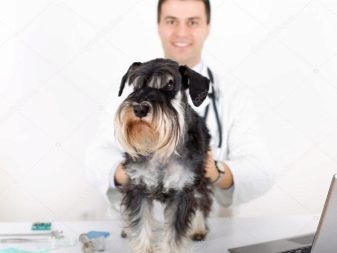
How to choose a puppy?
It is advisable to purchase a puppy from trusted breeders or in a kennel, as buying an animal “by hand” cannot fully guarantee the presence of all breed characteristics in a dog, starting from the exterior and ending with behavior. Moreover, the kennel confirms the puppy's thoroughbredness with documents, gives him a puppy card and a veterinary passport with notes on calendar vaccinations. Zverg begin to sell after reaching 1.5-2 months, but if you need to buy an exhibition puppy, it is better to wait a bit and get a grown pet at the age of 6 months.
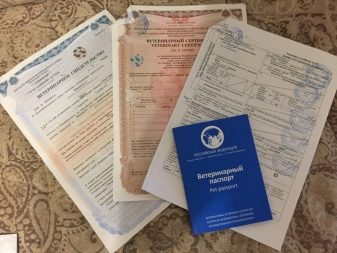

By this time, all the pedigree signs become visible in the dog and the exterior is almost formed.
The first thing you need to pay attention to when buying is the appearance of the puppy. The baby should be well-fed and active, with a shiny coat and clean eyes.
Next, you need to carefully feel the pet and make sure there are no tumors, not paying attention to the bulge between the shoulder blades. This is a normal reaction of the body to vaccination, so you should not worry about this. Then you need to evaluate the behavior of the puppy: a healthy baby will have fun playing with his brothers and will not show any aggression towards a stranger.
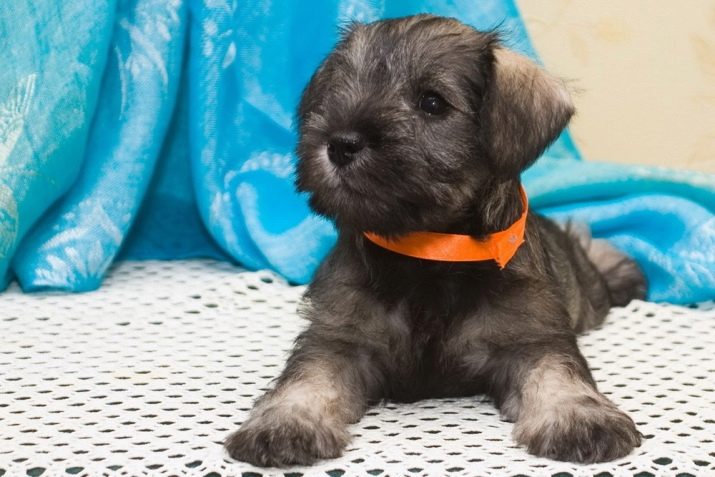
However, small brawls with other puppies are the norm, which is especially true for males.
It is also advisable to look at the parents of the pet and observe their behavior. An adult miniature must be energetic and vigilant, so a formidable growl or barking towards the buyer is quite normal. Then you need to try to make contact with the baby and make sure that the puppy is interested, not agitated and, despite the breed incredulity, is ready to communicate.
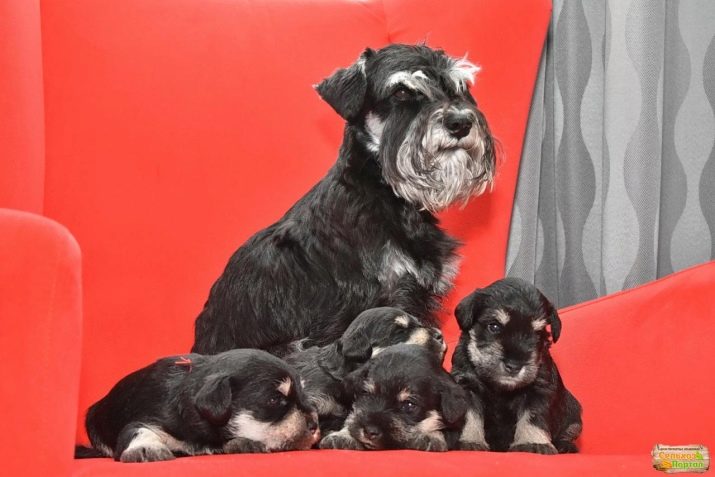
After the choice is made, it is advisable to familiarize yourself with the documents of the parents, as well as check the availability of a veterinary passport with vaccination marks on the puppy himself. When buying a tsverg, one should remember that the price of a purebred puppy cannot be lower than 18,000 rubles. Parents of such a baby usually have ratings of “good” and “very good”, and there are no champions among the closest ancestors.
If the parents are more titled, then the average cost of puppies is from 25,000 to 38,000 rubles, and depends on the number of regalia and “citizenship” of the ancestors. However, one should not be seduced by such an expensive acquisition, since often the children of the most famous champions do not seek recognition in the ring.
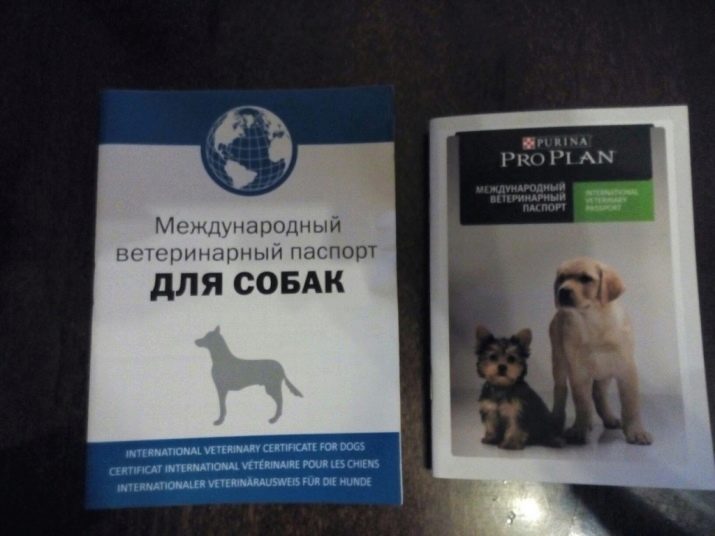
But such a puppy will carry all the best signs of the breed and demonstrate its dignity to the owners every day.
If the dog is purchased, as the dog breeders say, “on the sofa”, then you can limit yourself to buying a puppy for 10,000 rubles. These prices are often set by nurseries, offering small tsvergs for them that do not meet the standard. Among the defects may be overshot or overshot, tall or dwarf, and color mismatch.
In the documents of such babies, the mark "not for breeding" is necessarily put, which prevents the further birth of puppies with defects and prevents the fixation of pedigree anomalies. And the last tip: do not get an adult miniature schnauzer, since its adaptation to a new house and new faces is quite difficult, and there is a chance that the dog will not recognize the real owner in the new owner.
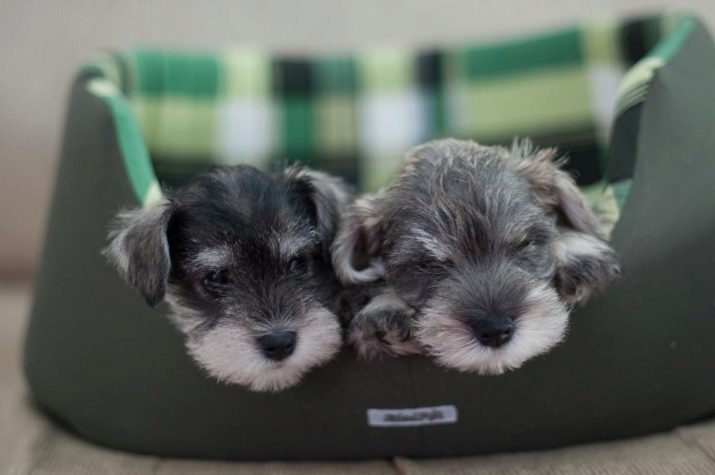
Maintenance and care
Miniature schnauzers are designed for home maintenance and are ideal for small apartments. However, such pets do not belong to the category of exclusively “apartment” dogs: they will not go to the tray and cannot stand the absence of walks. Moreover, Zwerg is a dog of active owners, therefore it is impossible to give such a dog to an elderly person. The dog should receive a large "portion" of physical activity every day, otherwise it will spend its energy on moving houses.

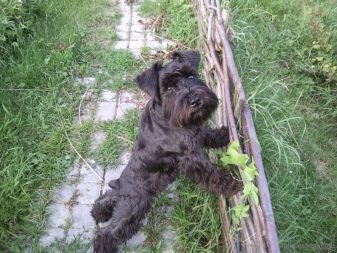
By the way, complaints about property damage are very common among owners of tsvergs, and more often they are explained by a banal lack of time for owners to take full walks with a dog.
In order to avoid irreparable consequences, it is necessary to remove bottles of household chemicals, flower pots, decorative interior items and shoes from the animal’s reach in advance. In addition, you must raise the network cables, extension cords and, if possible, transfer the wiring. The best option is to limit the freedom of movement of the tsverg in one roomtightly closing the doors to other rooms of the apartment.
Teenage puppies are already quite agile and quick-witted, so the dog also has nothing to do in the kitchen. Otherwise, the little miniature can easily jump onto the stool, climb up from it to the table and eat the products rashly forgotten by the owners. Therefore, the restriction of the movement of the pet in its absence should be taken care of in advance.

As for pet care, the main component is hair care. This is due to the rigid structure of the hair and its large length, leading to rapid rolling into tangles. If the tsverg's hair is not taken care of, then fallen hair will tighten the skin and eventually cause its inflammation. To prevent this from happening, puppies from 3-4 months of age are accustomed to regular combing, which is performed with a soft brush 2-3 times a week.
From about the same age, the tsvergs are accustomed to washing the beard. To do this, first use wet wipes and after the baby gets used to it, wash the beard with warm water and wipe it dry with a soft cloth.
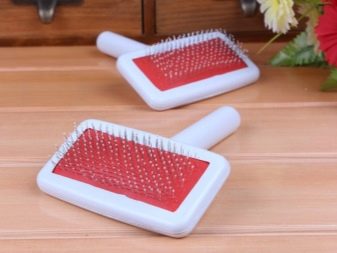
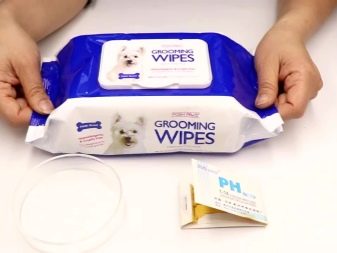
Adult zergs are combed a couple of times a week, after moisturizing the coat with conditioner, balm or spray.
Miniature schnauzers are bathed no more than 2-3 times a year, and their paws, breasts, beard and lower abdomen are washed every week, using special shampoos for wire-haired dogs. For this, the pet is placed in a bathtub on a rubber mat and with the help of a shower it is washed with water at a temperature of 38-39 degrees.
Then the dog is thoroughly blotted with several dry towels, slightly dried and combed. It is advisable that the miniature schnauzer dries naturally, as the frequent use of a hair dryer often leads to drying out of the skin and makes it vulnerable to various kinds of inflammation.
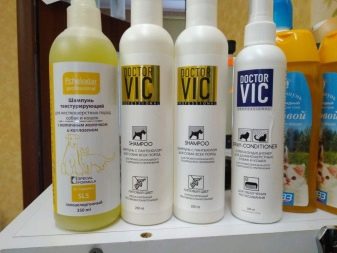
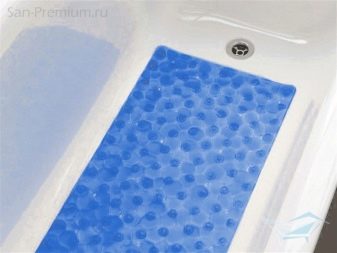
Tsvergs need regular plucking of dead hair - trimming. The need for the procedure is due to the fact that the old wool does not fall out and does not allow new to grow.The first trimming is performed after the dog changes teeth and continues throughout the life of the pet with a regularity of 1 time in 3 months. The pluck can be made both manually and with tools such as a stripper and trimmer.
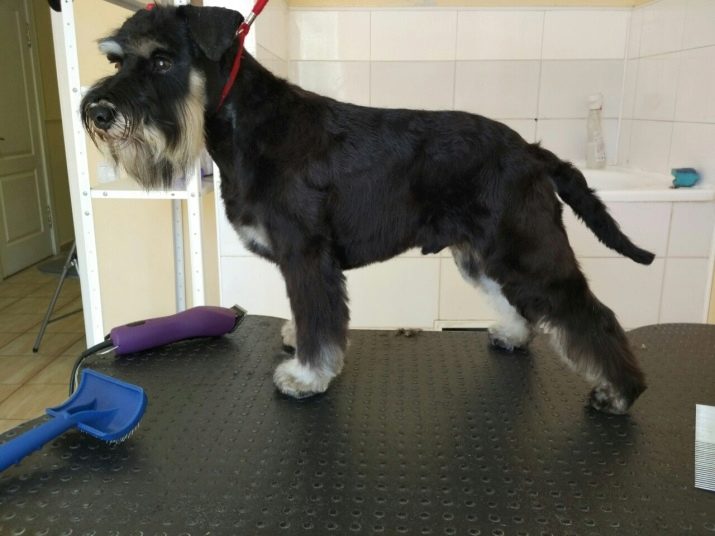
However, around the ears and in the throat, the hair is plucked out only with your hands and very carefully.
It should be understood that trimming is a very time-consuming and lengthy procedure, for which it is desirable to release the whole day, as even professional groomers spend at least 5 hours on this. If trimming is performed independently, then from time to time the dog needs to be let go for a rest: the animal should be able to warm up, drink and, if necessary, go to the toilet. It is also allowed to divide the procedure into two days. In winter, the first couple of weeks after trimming for walks you need to wear jumpsuits or other warm clothes.
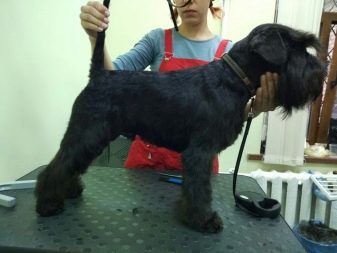
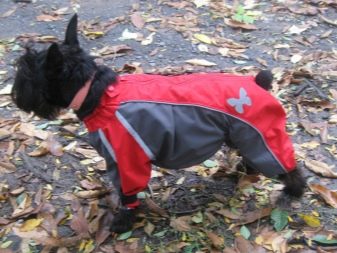
However, this is not all. About once every 1.5 months, the miniature schnauzer should undergo a hygienic haircut, during which the animal's eyebrows and beard are shortened, as well as the grown hairs on the paw pads and around the anus. Exhibition zerds are trimmed and trimmed only by experienced groomers, as many nuances, including color, influence the haircut technique.

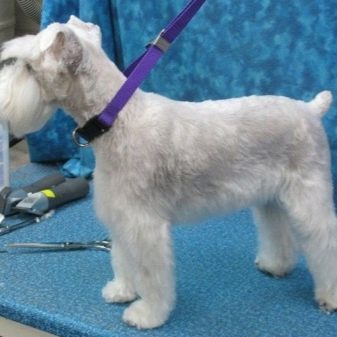
In addition to grooming, it is necessary to monitor the health of the eyes and ears of the pet.
To do this, it is recommended to inspect them daily, and if necessary, remove the discharge with a wet disk. Particular attention should be paid to the ears: due to the fact that they are hanging, air exchange in them is difficult. Therefore, to improve ventilation, it is imperative to pluck out the interfering coat. Ear cropping is also allowed. and can be performed at the request of the owner.
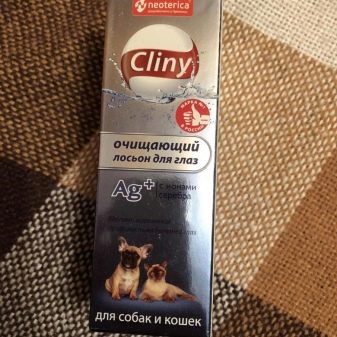
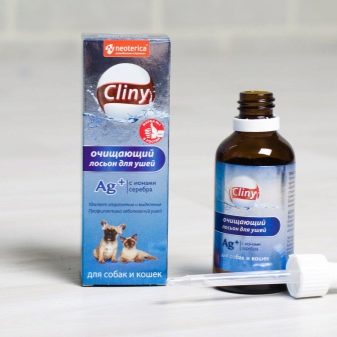
The teeth of the zwergs are cleaned as necessary when plaque appears, using dog toothpaste and a brush head on the finger for this. In case of loss of not all deciduous teeth, the pet should be taken to the veterinarian to remove them. Otherwise, they will not allow molars to grow properly, which can provoke the formation of an incorrect bite. The claws of the miniature schnauzers are cut at home as they grow, using a clipper.
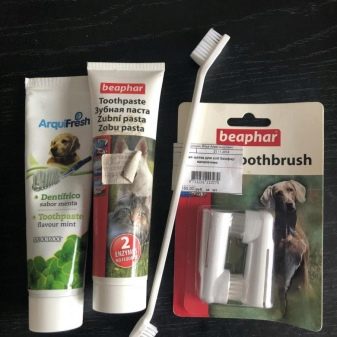
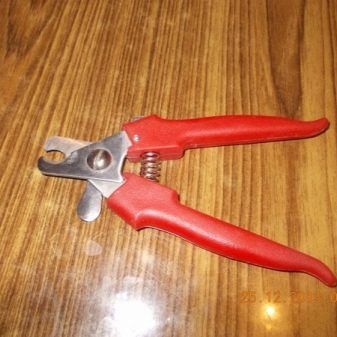
The puppy should be accustomed to this procedure as early as possible so that subsequently the animal adequately responds to it and does not break out.
What to feed?
Feeding miniature schnauzers has its own nuances, although in general it is not too different from feeding other dogs. In particular, zergs should not be overfed, which is due to their predisposition to rapid weight gain, which is clearly visible even with the naked eye.
Fat dogs become sedentary, lazy and prone to various diseases. Besides, miniature schnauzers can not be fed from the general table. This is due to their tendency to allergic skin rashes, the cause of which is the use of inappropriate products.
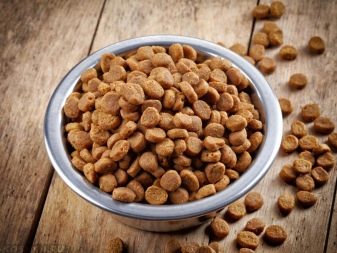
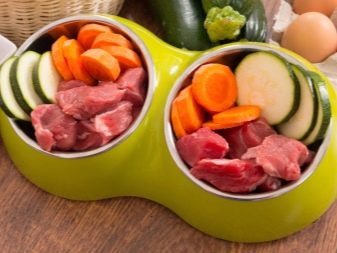
The best option for eating miniature schnauzers is premium dry food for active dogs. In such formulations, all the substances necessary for the dog’s body are in the right amount and compatible combinations.
If it is decided to feed the tsverg with natural food, then his diet should half consist of lean meat or offal, and the rest should be cereals (buckwheat, rice or oatmeal) and vegetables. Boiled eggs, low fat cottage cheese, raw chicken necks, kefir and boiled sea fish, previously peeled, should be given a couple of times a week.
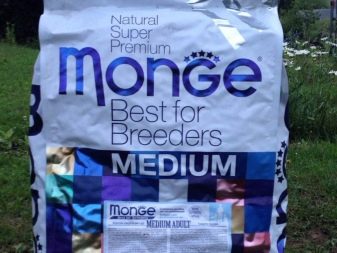

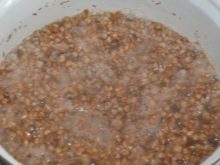

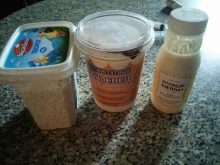
Feeding should be carried out strictly according to the regime at the same time.
Small puppies up to 4 months of age are fed 5-6 times a day, then transferred to 4 meals a day and by 7-9 months to 3 meals a day. By year, the miniature should eat 2 times a day, and the morning portion should be slightly larger than the evening.
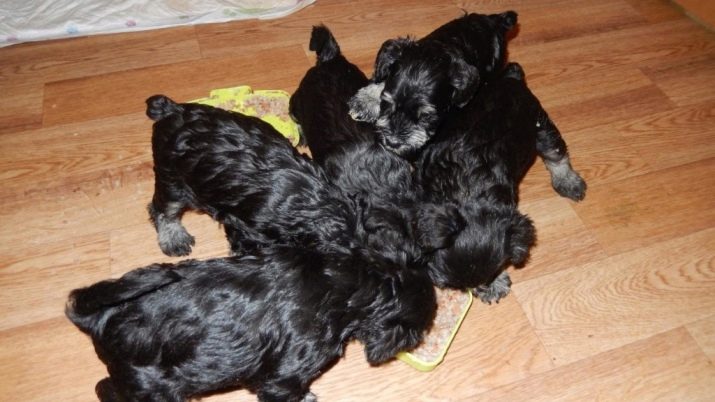
The list of foods prohibited for the miniature schnauzer includes pickles, smoked and fried foods, fatty meats, pastry sweets, muffins, spicy and salted dishes, as well as tubular bones and foods rich in dyes and artificial additives. Whatever type of food is chosen, the dog should have round-the-clock access to fresh drinking water.

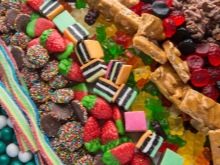

Parenting and training
It is necessary to raise a miniature schnauzer from the first day the puppy appears in the house, long before the training begins. First of all, the pet needs to show who is the boss in the house and under no circumstances should the baby go about it. The dog should immediately clearly understand what is permissible and what is not, and if something was forbidden, then the ban should act once and for all, without any exceptions and concessions.
For example, if the tsverg was banned from entering the kitchen, then exemptions like "just a minute" or "just once" should not be a reason for lifting the ban. Otherwise, the dog will understand that any "impossible" can be challenged - then it will be much more difficult to call it to order.
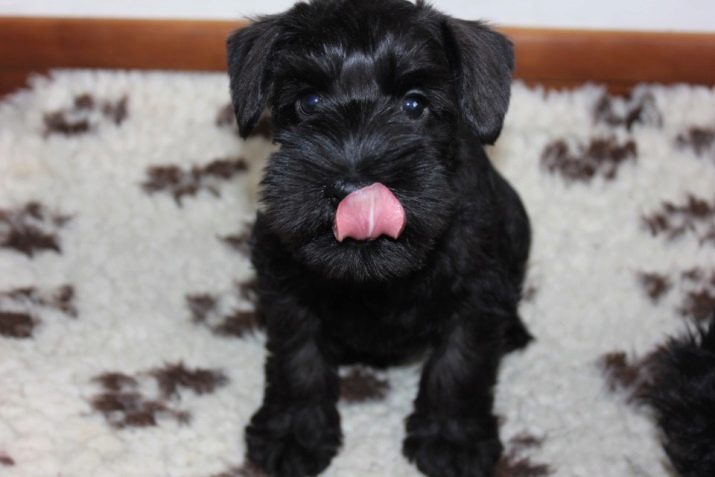
The main thing is at this stage to become a leader and leader for a small Tsverg, then it will be much easier to educate him.
The training of the miniature schnauzer must be started from 4 months of age using the game element for this. The easiest exercise will be the installation of a toy or ball, as puppies are very fond of rushing around small moving objects. It should be remembered that it is impossible to beat a pet for failure to execute commands. Zwerg perfectly understands the intonations of the human voice, so a strict tone will be enough for him.
More serious workouts are usually started from 6 months., since by that time the dog’s nervous system had practically formed, he very easily remembers unfamiliar words and consciously executes commands.
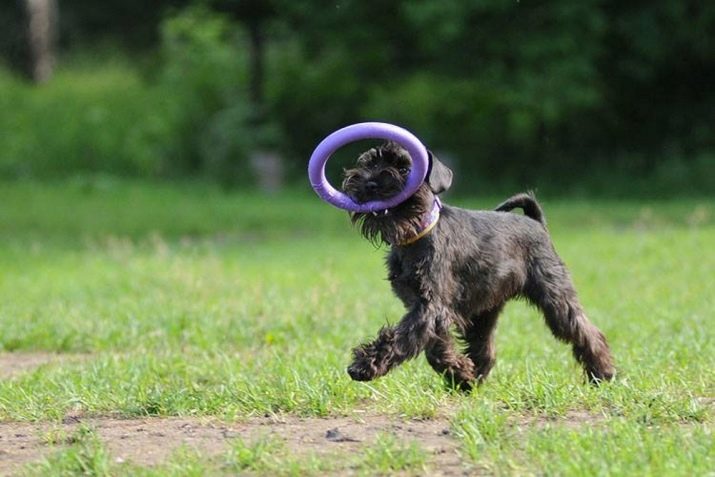
The animal should be trained patiently and methodically, in no case be touched by puppy tricks in the classroom. In case of disobedience or manifestation of aggression, the pet should be stopped with a loud shout, and for the more dull, shake the scruff of the neck. It should be borne in mind that by their nature, the tsvergs are very cunning and resourceful and often use different tricks to outflank the execution of commands.
In such cases, the owner needs to be persistent and return the pet to classes.
These dogs have an excellent memory, so they quickly remember what to do, but not how. In general, training is carried out according to the classical scheme using a system of rewards and punishments. Zwerg works well in the group, so the owner can enroll him in a general training course, where an experienced dog handler will help socialize the dog, remove unnecessary zoo aggression and train the teams.
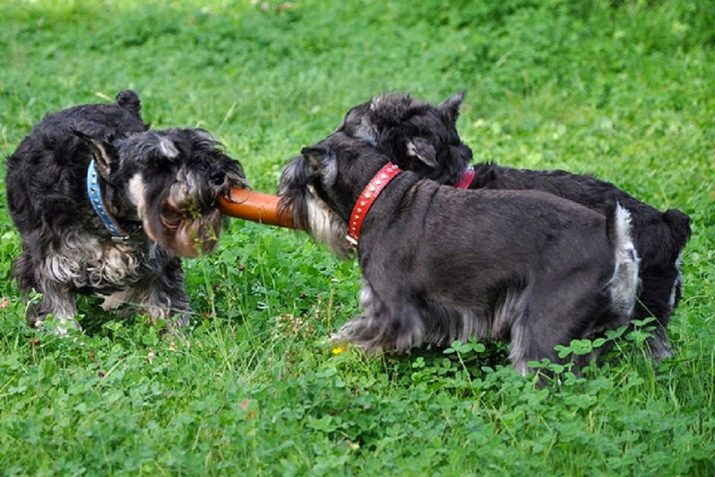
List of nicknames
Choosing a name for a pet is creative and quite responsible, and it is sometimes very difficult for the owner to choose one from a huge number of clicks. When buying a puppy in the kennel, the task is much easier, since the baby already has its own name, compiled taking into account eminent ancestors on both lines, their regalia and the name of the kennel. Then this long name is shortened by the owners to a short but sonorous house nickname, which the puppy is accustomed to.
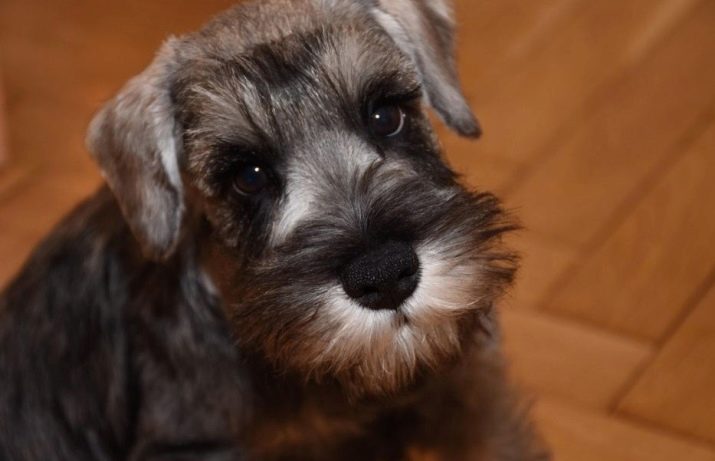
Sometimes breeders only offer the first letter of the name and the owner of the dog has the right to invent a nickname for the puppy.
For such cases, you can use the list of common names for girls and boys that are most suitable for miniature schnauzers. So, the dog can be called Arbat, Armand, Axel, Alex, Brooks, Bruno, Biscay, West, Veles, Whist, Gray, Thunder, Dark, Dixie, Eric, Zhigan, Sorg, Zero, Icarus, Ishim, Irt, Kurt, Leon, Leiden, Mark, Maurice, Neman, Nord, Oscar, Porter, Perez, Roy, Richard, Steve, Stark, Tox, Trisha, Uranus, Fix, Fidel, Horst, Zeiss, Chuck, Chenny, Shaman, Shorokh, Eric, Eridan, Eustace, Eustace, Jurgen Yagor, Jagrin or Yashka.
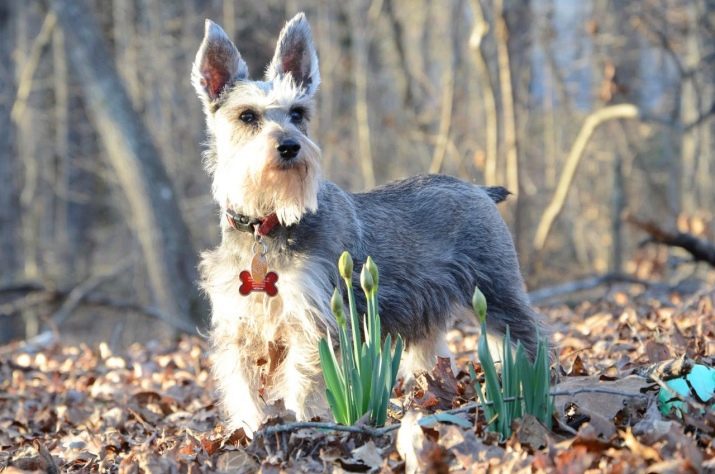
The girl can be called Ayma, Betty, Vista, Gerda, Della, Yeroy, Zhalla, Zeya, Irma, Krama, Linda, Lyme, Myra, Neris, Orina, Pinta, Romina, Raina, Sonata, Sega, Tamil, Tori, Ulma, Ursula, Freya, Fanny, Chloe, Hannah, Tsera, Cherry, Charm, Shima, Annie, Elf, Yursi, Justa, Yara or Ioannina.
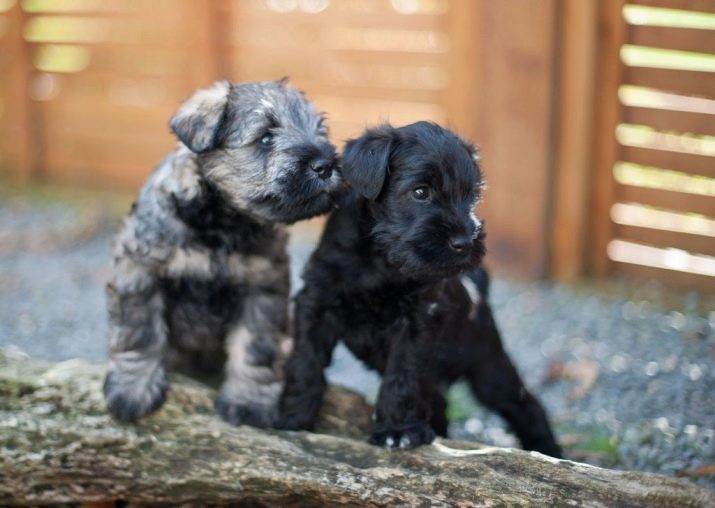
Despite the size, the miniature schnauzer is a serious dog, and therefore nicknames like Pukhlikov and Bagels are clearly not suitable for him. The dog should have one or two-syllable name, which is well perceived by ear and not in tune with the main commands. For example, you can’t call a dog Fars, since the animal can easily confuse it with the “fas” command and disorient in its actions.

Owner reviews
The owners of the miniature schnauzers very highly appreciate their pets and respond about them in an enthusiastic way. They all agree that the miniature is an ideal family dog, which finds a common language with literally every household. The pet can entertain the child for days on end, run down to sit down to the hostess and stand up to protect the owner on an evening walk. Moreover, the dog is not prone to causeless loud barking, which greatly facilitates the life of neighbors on the porch.
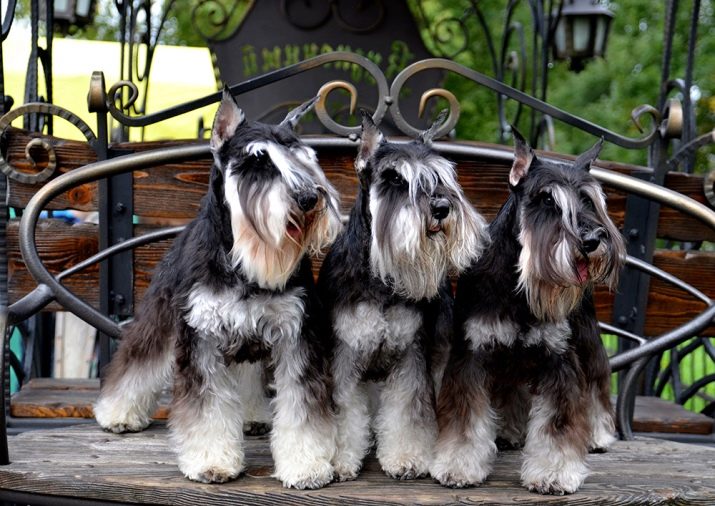
It is also noted lack of smell and coat in the apartment, sharp mind, understanding and developed sense of humor of the pet. Attention is also drawn to the fact that the tsvergs quickly recognize the situation and begin to act according to circumstances. For example, an adult miniature will never start a noisy game if someone is resting in the apartment.
Among the minuses of the breed, the need for trimming and eaten slippers of the owner during the growing up of the pet are noted.
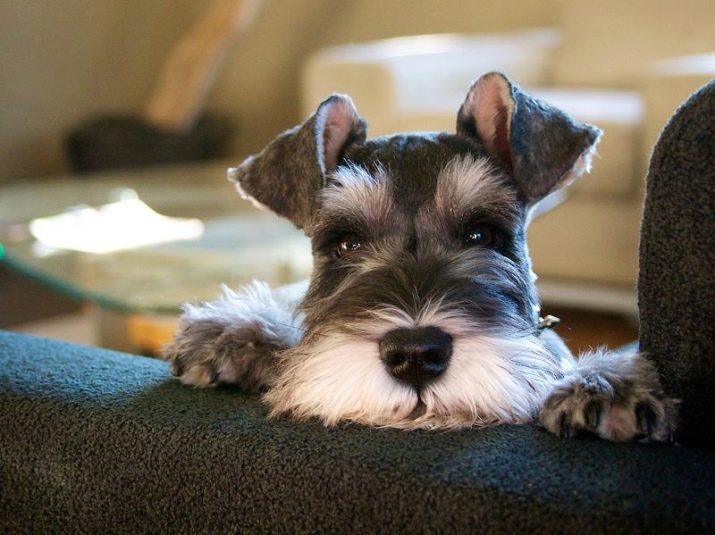
Learn more about the breed from the next video.
